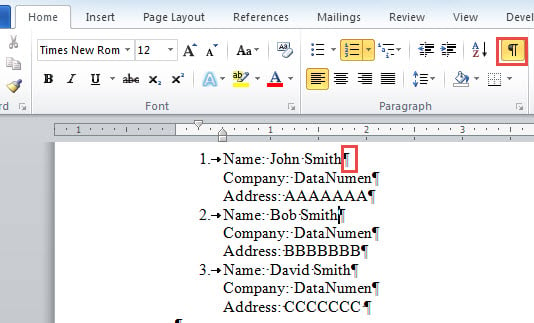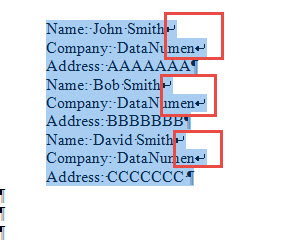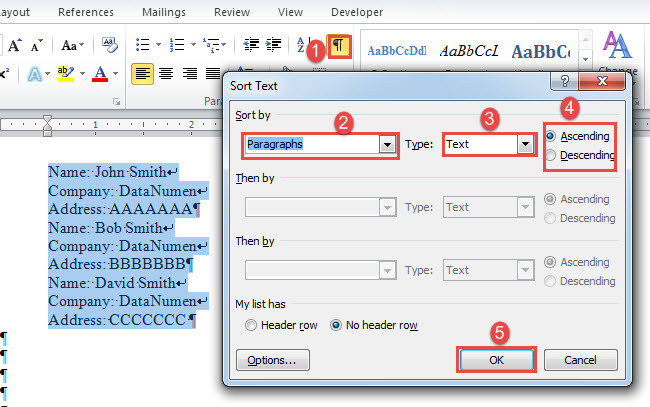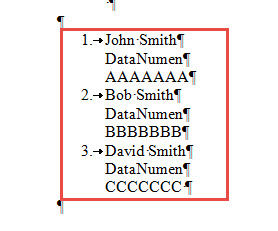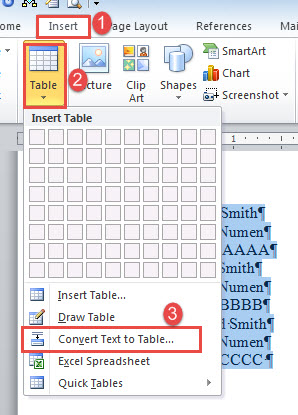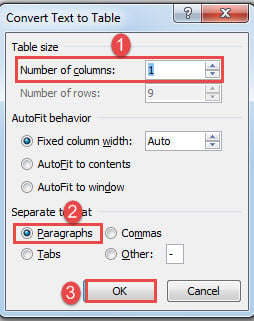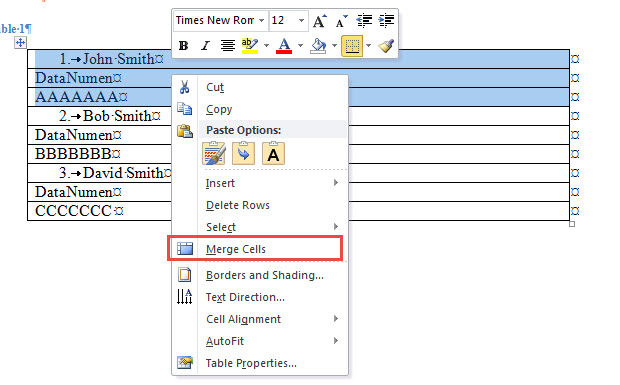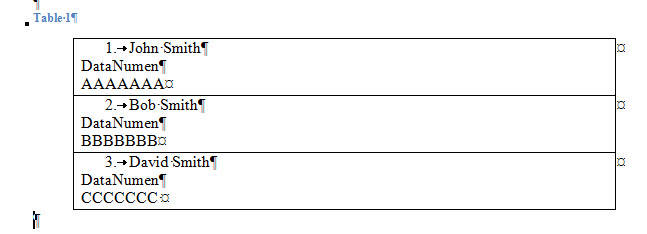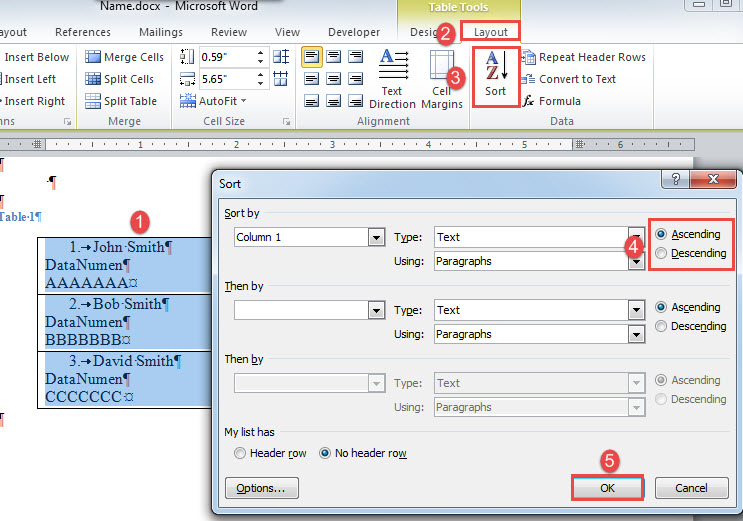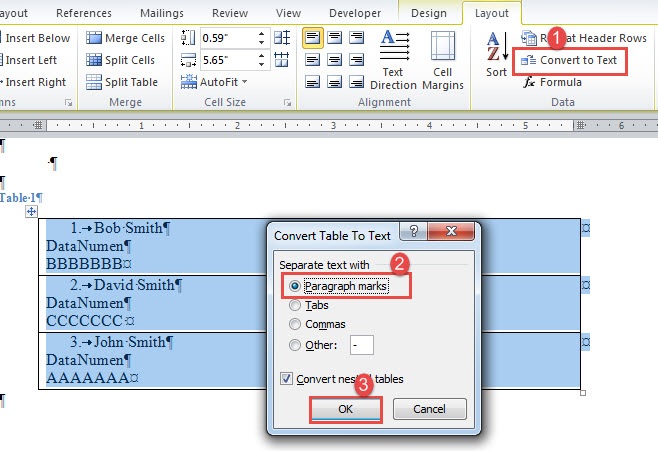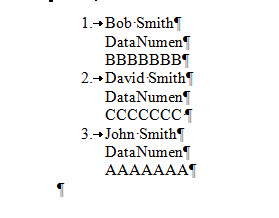In this article, there will be 2 ways available for you to sort numbered list entries with multiple lines in your Word document.
Now and then, we use numbered list a lot in Word document. And there can be the case where a list entry can has several lines. More often than not, we wouldn’t hesitate to press “Enter” to jump to the next line. By doing this, we just add a paragraph mark, which means the second line we see is actually the second paragraph. This won’t mess up with the formatting but will make sorting list entries really hard.
The best preventive idea is, of course, to press “Shift+ Enter” instead of “Enter” alone. But, few people will ever think of it and even if you do, it’s still impossible if you inherit a document from someone else who doesn’t.
In order to address such issue, we offer you the following 2 workarounds to achieve the effect as such: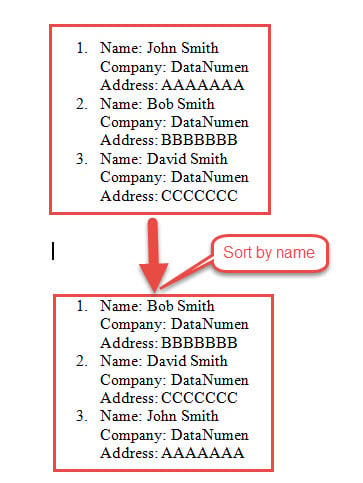
Method 1: Replace Paragraph Mark with Manual Line Break
If each entry has the same line heading like “Name”, “Company”, “Address”, just as shown above, you can use the “Find and Replace” feature to replace unnecessary paragraph marks with manual line breaks.
- At first, click the show or hide symbol button located under “Home” tab to show all hidden symbols in the document.
- Second, select the list which needs to sort.
- Third, press “Ctrl+ H” to trigger the “Find and Replace” dialog box.
- In our case, enter “^pCompany” and “^lCompany” in “Find what” and “Replace with” text boxes respectively. This is to replace the 3 paragraph marks following the first line of each entry to manual line breaks.
- Next click “Replace All”. And choose “No” in the reminder box.
- Then again in our case, entre “^pAddress” and “^lAddress” in “Find what” and “Replace with” text boxes respectively. This is to replace the 3 paragraph marks following the second line of each entry to manual line breaks.
- Repeat step 5. Repeat the replacement several times until only the last paragraph mark of each entry is left.
- Now you can start sorting the list by click the “Sort” command under “Home” tab.
- In “Sort Text” dialog box, choose “Paragraphs” and “Text” for the first 2 text boxes. Then select either “Ascending” or “Descending”. Lastly, click “OK”.
You will notice the list numbers are gone, thus you will have to manually add them back.
Method 2: Sort List Entries in a Table
Now here is another situation where there are no similar line headings like those of the sample in method 1. Instead, it can look like this:
- To begin with, select the list and click “Insert” tab.
- Next click “Table” and choose “Convert Text to Table” option.
- In the dialog box open, set column number for “1’.
- Then select “Paragraphs” for separator and click “OK”.
- Now what we get is a table with 1 column and 9 rows. Select the first three rows which all belong to entry one.
- Next right click and choose “Merge Cells”.
- Repeat the merging operation until each entry occupies just 1 row.
- Then select the table and click “Sort” under “Layout”.
- Go to choose a sorting order and click “OK”.
- The contents are now in correct sequence. You need to convert the table back to text next. Ensure the table is in selection and click “Convert to Text” option under “Layout” tab.
- In the box popping up, select the “Paragraph marks” and click “OK” next.
- Finally, use “Tab” to adjust the alignment.
Tackle Problematic Documents
The least we’d expect is to find our valuable documents corrupted. The consequences can be overwhelming sometimes. Therefore, whenever you encounter with a damaged documents which happens to be important, don’t think twice before resorting to a docx fix tool.
Author Introduction:
Vera Chen is a data recovery expert in DataNumen, Inc., which is the world leader in data recovery technologies, including tool to repair xlsx and pdf repair software products. For more information visit www.datanumen.com
